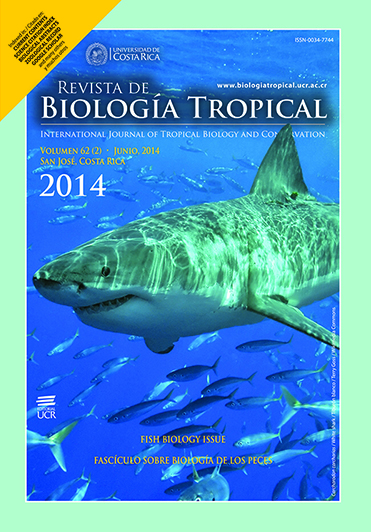Abstract
In plant communities, the species distribution patterns and their relationships with environmental factors are of central importance in ecology. In San Luis Potosi of Mexico, woodlands of Pinus cembroides and P. johannis are simpatric, but P. cembroides tends to be located in South and Southwest slopes, in more disturbed sites; unlike, P. johannis, is mostly distributed in mesic areas, in North and Northeast slopes. The aim of this study was to analyze the influence of some physical factors on the floristic similarity of pinyon pine P. cembroides and P. johannis. The study area was located in the Sierra San Miguelito, San Luis Potosi, Mexico. We selected 40 sampling units spread over an area of 50km2. In each unit, we laid out two 20m long lines perpendicular to each other, in which we recorded cover data of the plant species intercepted. We developed two data matrices, the first one including cover values of 91 species, and the second one, considering seven topographical, climatic, and solar radiation variables. We applied cluster analysis and ordination to explore the influence of environmental variables on the floristic differentiation of pinyon pine woodlands. Clustering showed six groups, the first three characterized by P. cembroides. The ordination showed that variance represented by the first three axes was 65.9%. Axis 1 was positively correlated with altitude and negatively with mean annual temperature; axes two and three, showed low correlation with the variables tested. P. cembroides woodlands and accompanying flora tend to be located in lower altitude, higher mean annual temperature, and mainly in South-Southwestern slopes. In contrast, stands of P. johannis, mixed stands of P. johannis-P. cembroides, and Quercus potosina, were usually founded in greater altitudes, mean annual temperature slightly lower, and North-Northeastern exposure. The sites of these monospecific and mixed woodlands with associated species, indicators of environmental variables, generates the pre-diagnosis of the situation of the communities and their condition, so that future actions can be planned in agreement with the natural balance of the ecosystem.##plugins.facebook.comentarios##

This work is licensed under a Creative Commons Attribution 4.0 International License.
Copyright (c) 2014 Revista de Biología Tropical






